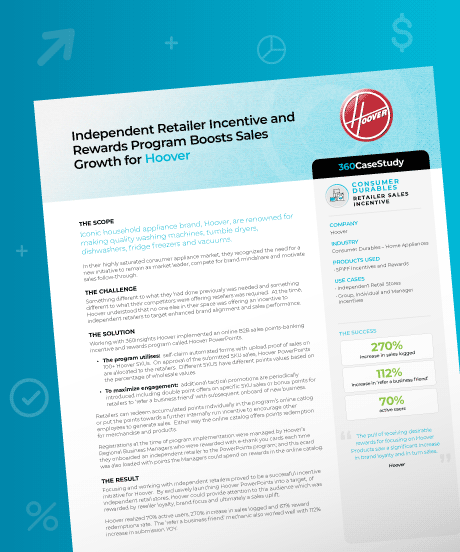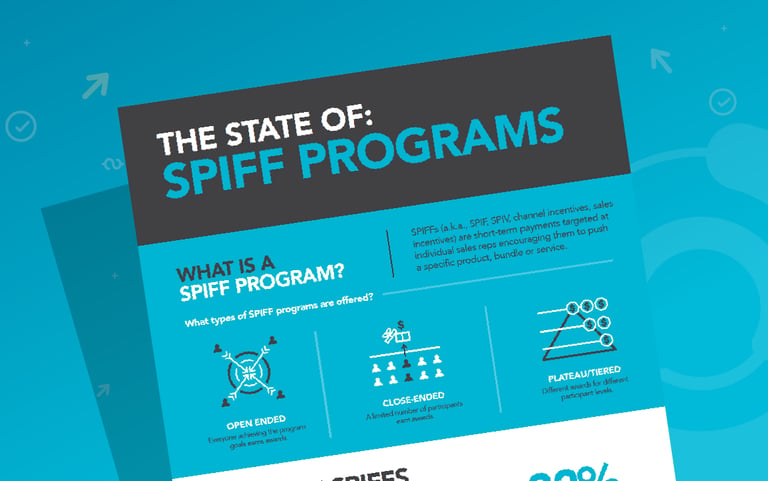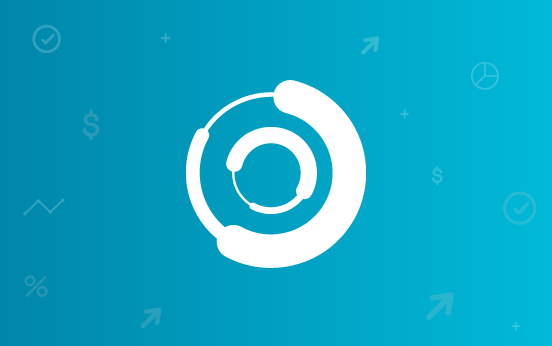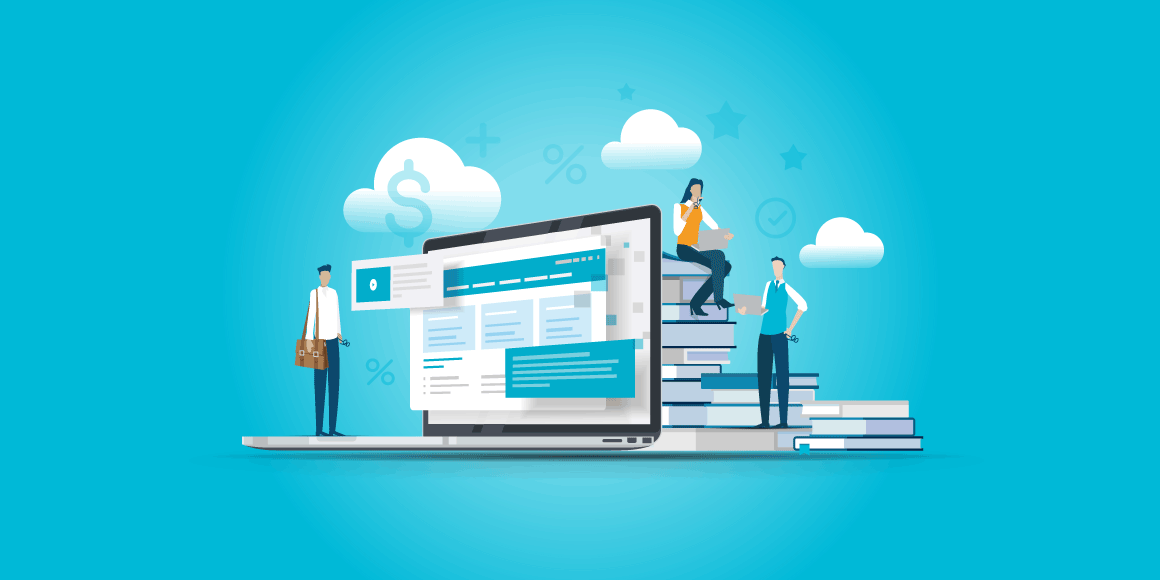What Is a Sales Spiff?
A sales spiff—short for Sales Performance Incentive Fund—is a short-term bonus designed to motivate salespeople or channel partners to achieve a specific, urgent goal. Unlike long-term commissions that reward sustained performance, a spiff focuses on driving quick wins: selling a targeted product, meeting a short-term quota, or clearing out inventory.
Sales spiffs are one of the most flexible tools in the sales incentive toolbox. They create energy and urgency, helping companies push strategic initiatives across internal teams, distributors, and retail partners. Whether you’re launching a new product or trying to meet end-of-quarter goals, a well-structured spiff program can deliver immediate results.
Why Companies Use Sales Spiffs
The core purpose of a spiff is speed and focus. In today’s competitive markets, sales teams often juggle dozens of SKUs and conflicting priorities. A spiff cuts through the noise by giving reps a short-term reason to prioritize one product, goal, or behavior over another.
Common use cases include:
- Boosting new product launches: Encourage sales teams to promote a new or unfamiliar product that may not yet have established market traction.
- Accelerating sales cycles: Create urgency for reps to close deals faster, particularly at the end of a month or quarter.
- Clearing old inventory: Incentivize movement of aging stock to make room for new lines.
- Promoting strategic behaviors: Reward actions beyond a simple sale—such as scheduling demos, cross-selling, or securing new customers.
- Aligning with corporate goals: Direct attention toward key markets, strategic segments, or new business units.
When executed properly, spiffs not only increase short-term revenue but also boost morale and engagement across sales channels.
How Spiffs Differ from Commissions
While both are forms of sales incentives, spiffs and commissions serve very different purposes. Commissions are part of a salesperson’s long-term compensation, while spiffs are tactical, time-bound motivators.
| Feature | Sales Spiff | Sales Commission |
| Purpose | Drives immediate, short-term actions to meet specific goals. | Rewards ongoing, long-term sales performance. |
| Duration | Temporary—usually lasting days, weeks, or months. | Continuous—built into standard compensation plans. |
| Reward Type | One-time bonus: cash, gift card, or non-monetary prize. | Percentage of total sales or revenue generated. |
| Tactical Use | Used to address short-term challenges (e.g., slow sales, new launches). | Serves as a stable motivator for long-term performance. |
| Flexibility | Easily customized for different campaigns or partner types. | Harder to adjust, often locked into formal pay structures. |
In short, commissions form the backbone of sales compensation, while spiffs act as the accelerators—a boost pedal to hit key targets fast.
Types of Sales Spiffs
The beauty of a spiff program lies in its flexibility. Depending on the audience, budget, and goal, rewards can be monetary, experiential, or recognition based.
1. Monetary Spiffs
The most straightforward type, monetary spiffs pay out cash directly to sales reps. These payments may be delivered via payroll, reloadable debit cards, or digital payment platforms. They’re simple, fast, and universally appreciated.
2. Non-Monetary Spiffs
For many teams, non-cash rewards can be more motivating and memorable. Examples include:
- Gift cards to popular retailers or restaurants
- Travel experiences or event tickets
- Electronics, tools, or branded merchandise
- Extra paid time off or flexible work perks
- Recognition awards like “Rep of the Month” or “Top Partner Performer”
Non-monetary spiffs often generate higher emotional engagement and can be more cost-effective when negotiated through corporate partnerships.
3. Tiered Spiffs
These programs reward progressively higher levels of achievement. For example, a rep might earn $50 for their first 10 sales, $100 for the next 10, and $250 for hitting 30. Tiered structures encourage sustained performance and prevent early drop-off.
4. Mystery Spiffs
Mystery spiffs add an element of surprise and gamification. The reward isn’t revealed until after the goal is achieved—keeping motivation and curiosity high throughout the campaign.
5. Team-Based Spiffs
Rather than rewarding individuals, team-based spiffs pay out when an entire branch, region, or channel partner achieves a shared target. This encourages collaboration and collective accountability.
Designing an Effective Sales Spiff Program
Creating a successful spiff requires more than simply announcing a bonus. The best programs are strategic, transparent, and data driven.
1. Define Clear Objectives
Every spiff should begin with a measurable, time-bound goal—such as “Increase sales of Product A by 15% this quarter” or “Register 50 new partner accounts in 30 days.”
Common objectives include:
- Increasing sales of a specific SKU
- Improving upsell or cross-sell rates
- Growing market share in a target region
- Driving engagement with a new partner portal or tool
The clearer the goal, the easier it is to measure ROI.
2. Make It Timely and Visible
Spiffs are powered by urgency. Announce them with energy and provide constant visibility into performance through real-time dashboards, email updates, or digital leaderboards. Visibility creates competition—and competition drives results.
3. Offer Meaningful Rewards
Not all rewards motivate equally. Choose incentives that resonate with your team’s culture. For example:
- In Building Materials, contractors often prefer prepaid cards they can use for business expenses.
- In Auto Aftermarket, installers might value tool credits or branded gear.
- In Life Sciences, non-cash rewards like professional development stipends can be effective.
- In TMT (Technology, Media & Telecom), digital gift cards and tech gadgets are popular.
- In Consumer Durables, travel or luxury experiences may inspire greater excitement.
When in doubt, survey your audience to determine what truly motivates them.
4. Keep Rules Simple and Transparent
Complex or confusing spiff rules quickly demotivate participants. Clearly outline eligibility criteria, how rewards are calculated, and when they’ll be paid. Transparency builds trust and ensures fairness.
5. Track and Measure Results
To understand impact, measure KPIs such as:
- Incremental sales lift compared to baseline performance
- Number of participants earning rewards
- Sales cycle time reduction
- Product mix changes
- ROI per dollar spent on incentives
Use the data to refine future campaigns. Even small adjustments—like altering the reward type or shortening the duration—can dramatically improve performance.
6. Pay Out Promptly
Timing matters. When a rep achieves the goal, the reward should follow quickly. Fast payout reinforces positive behavior and keeps enthusiasm high for future promotions.
Legal and Compliance Considerations
While spiffs are widely used, they must comply with federal, state, and industry-specific regulations in the United States.
- Tax Reporting: The IRS treats spiff payments as taxable income. Employers must report them on W-2 forms if paid to employees, or 1099s for independent contractors.
- Labor Laws: Spiffs cannot be used to bypass wage or overtime requirements under the Fair Labor Standards Act (FLSA).
- Government Sales: Offering or accepting a spiff tied to federal government contracts is prohibited, as it may be considered a kickback.
- Industry Regulations: Certain sectors, such as healthcare or financial services, have strict anti-bribery and compliance guidelines. Always consult HR and legal teams before launching a program.
Global SPIFF Campaign Challenges
For multinational brands, running a global spiff introduces additional complexity. Currency differences, varying labor laws, and regional reward preferences must be managed carefully.
- Currency and Tax Compliance: Reward values should be equitable across markets, and local tax implications must be considered.
- Cultural Sensitivity: Rewards that resonate in the U.S. may not appeal in Europe or Asia. Localize rewards to align with regional preferences.
- Technology Integration: A global incentive management platform can automate payouts, track engagement, and manage compliance in multiple jurisdictions.
Global brands often partner with third-party incentive solution providers to handle these operational challenges and ensure legal consistency.
Measuring the ROI of a Spiff Program
A spiff is only successful if it drives measurable results. To calculate ROI, compare incremental revenue generated during the campaign against the total cost of rewards and administration.
ROI Formula Example:
For instance, if a 30-day spiff drives $500,000 in additional sales at a cost of $50,000, the ROI is 900%. Beyond pure financials, also track qualitative metrics like morale, engagement, and participation. These indicators reveal how effectively spiffs influence behavior.
Integrating Spiffs into a Broader Incentive Strategy
While spiffs are powerful, they should not stand alone. The best-performing sales organizations use them as one component of a comprehensive incentive ecosystem that includes:
- Tiered loyalty programs for sustained engagement.
- Co-op and MDF programs for partner marketing alignment.
- Sales performance management (SPM) tools for tracking and analytics.
- Recognition and gamification programs to maintain motivation beyond cash.
By combining these tools, companies can drive both short-term wins and long-term loyalty across their partner and sales ecosystems.
Key Takeaway
A sales spiff is more than just a bonus. It’s a focused, fast-acting lever to achieve specific sales outcomes. When designed strategically, spiffs can:
- Drive immediate sales growth
- Motivate teams and partners
- Improve channel engagement
- Provide measurable ROI within weeks
However, to sustain results, spiffs must be part of a larger, data-driven incentive strategy. Done right, they’re not just short-term motivators, they’re a powerful accelerator for long-term sales success. .
Increase Sales to Become a Market Leader

Case Study
Consumer Durables: Maximizing engagement with retailers to drive sales uplift
Discover how 360insights worked alongside iconic household appliance brand, Hoover, to implement a new incentive initiative in the marketplace.
This unique B2B sales points-based reward program motivated sales follow-through, to result in a 270% increase in sales and position themselves as market leader.
Frequently Asked Questions
SPIFF typically stands for “Sales Performance Incentive Fund” (sometimes written as SPIF or SPIV). It’s a short-term incentive designed to motivate sales teams or channel partners to achieve a specific goal.
A SPIFF is a one-time bonus for achieving a short-term objective, such as pushing a new product. Commissions are ongoing payments tied to every sale. SPIFFs create urgency and are usually limited to a defined period.
Participants often include internal sales reps, channel partners, distributors, and resellers. Programs can be structured for individuals or teams, depending on your sales model.
SPIFFs work best for clear, measurable objectives such as:
- Driving sales of a new or underperforming product
- Meeting end-of-quarter revenue targets
- Encouraging cross-selling or upselling
- Motivating channel partners to focus on your brand
Common rewards include cash bonuses, prepaid debit cards, travel experiences, gift cards, extra paid time off, and recognition-based rewards like leaderboards or digital badges.
Most SPIFFs run between one and three months to keep motivation high and prevent “reward fatigue.” Longer campaigns tend to lose urgency and engagement.
Best practices include defining clear objectives, setting a specific timeframe, keeping rules simple and transparent, communicating effectively, automating tracking and payouts, and measuring ROI to refine future programs.
Yes, SPIFFs are legal when they comply with federal and state laws. You must report SPIFFs as taxable income, comply with wage and overtime laws, and avoid offering SPIFFs related to U.S. government sales contracts.
Yes. The IRS treats SPIFFs as taxable income. Employers must report SPIFF payouts on W-2 or 1099 forms depending on the worker’s classification.
- Running them too long or too frequently
- Using unclear rules or reward structures
- Failing to automate tracking and payouts
- Neglecting legal and tax implications
Sales incentive software can automate program tracking, manage eligibility, update leaderboards in real time, and ensure timely, accurate payouts—reducing admin work and errors.
Track metrics like incremental sales growth, product adoption, participation rates, and program costs versus incremental revenue. Use dashboards or SPM software for deeper insights.
Yes, but global SPIFFs require extra planning around currency conversion, tax treatment in different countries, cultural preferences for rewards, and compliance with international labor laws.
Consider tiered loyalty programs, referral or advocacy programs, ongoing commission structures, non-financial incentives like career development, or full sales performance management systems.
SPIFFs are most effective as part of a layered incentive plan—working alongside commissions, long-term bonuses, and loyalty programs to drive both short-term action and long-term engagement.
Manufacturers of HVAC, roofing, electrical, and plumbing products often run SPIFFs to motivate distributors or contractors to choose their brand over a competitor. For example, a roofing manufacturer might offer a $50 prepaid card per qualifying installation during the spring season to drive pre-summer sales, or an HVAC brand might reward contractors for selling energy-efficient units before new regulations take effect.
Auto parts manufacturers and distributors frequently use SPIFFs to push new product lines or clear older inventory. For instance, a tire manufacturer could offer a one-time $100 bonus to sales reps for each fleet order of a new commercial tire model. Similarly, a brake parts supplier might reward auto shops that upsell premium brake pads during peak maintenance months.
Medical device makers, lab equipment suppliers, and vision care brands use SPIFFs to accelerate adoption of new technologies or encourage cross-selling to clinics.
An example: a contact lens manufacturer might offer optical reps a $25 gift card for every new multifocal lens prescription filled within a launch period. In lab equipment, a company could run a three-month SPIFF to reward sales reps for bundling consumables with high-margin instruments.
Technology vendors often use SPIFFs to motivate channel partners to sell new software licenses or hardware bundles. A telecom equipment maker could offer a $200 bonus per unit sold of a new router line to certified resellers during a product launch quarter. Media companies might SPIFF ad sales teams to bundle streaming add-ons or upsell premium packages before quarter-end.
Brands in appliances, electronics, and durable goods use SPIFFs to drive retail floor staff and independent dealers to feature their products. For example, a major appliance brand could reward store associates with points redeemable for merchandise for every smart refrigerator sold in the first 60 days after launch. A consumer electronics manufacturer might run a “double SPIFF” weekend to clear old inventory before a new model hits shelves.
Each vertical has its own buying cycles, regulations, and sales channels. Building Materials may focus on contractors and distributors, Auto Aftermarket on mechanics and fleet buyers, and Life Sciences on clinical reps and compliance. Understanding these nuances helps tailor your SPIFF to maximize impact and stay compliant.
- Building Materials: Watch out for union agreements and state contractor laws.
- Auto Aftermarket: Ensure rewards comply with state franchise and consumer protection rules.
- Life Sciences: Follow anti-kickback statutes and Sunshine Act reporting.
- TMT: Observe reseller agreements and data-privacy restrictions.
- Consumer Durables: Verify retailer or dealer policies on manufacturer incentives.
Need More Information? Check Out the Resources Below!
Whether you're looking for industry-specific incentive strategies or want to increase your knowledge, our curated list of resources are designed to answer your most pressing questions.

The State of: SPIFF Programs
%20copy%205.png?width=768&height=512&length=768&name=Blog_Channel%20Partner%20Ecosystem-How%20to%20Optimize%20Your%20Channel%20Go%20to%20Marketing%20Strategy_Feature%20Image%20(1160x580px)%20copy%205.png)
Do SPIFFs Work? How Do I Calculate SPIFF ROI?

